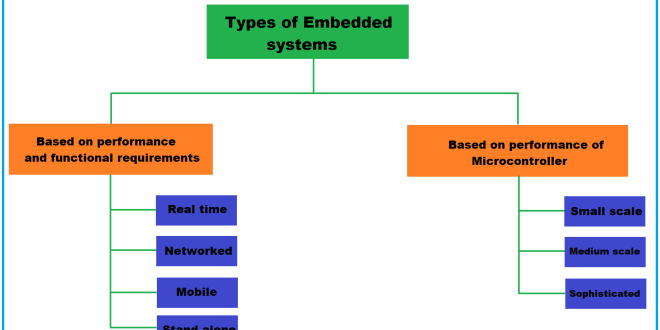Embedded systems are all around us, from our phones to cars and even to the devices in hospitals. These systems have been integrated into larger systems to increase their functionality and are created to carry out specific tasks. With the increasing importance of technology in our lives, it is important to know about the diverse types of embedded systems that are used in various industries.
In this article, we will explore numerous variations of embedded systems that you should know about.
Industrial Control Systems
Industrial processes are managed and automated using industrial control systems (ICS). These systems are used in manufacturing plants, oil refineries, and other industrial settings to control the flow of materials, temperature, and pressure. ICS consists of both hardware and software elements, and they are built to function in challenging conditions. Examples of ICS include Programmable Logic Controllers (PLCs) and Distributed Control Systems (DCS). These systems are responsible for controlling machines, such as conveyor belts, and ensuring that they operate within a safe range of parameters.
Medical Devices
In hospitals and clinics, patients are monitored and treated using medical devices. These devices are crafted to be reliable, accurate, and straightforward to use. Medical devices include blood glucose monitors, EKG machines, and infusion pumps. These devices use embedded systems to control their operation and communicate with other devices in the hospital network. Additionally, they are made to adhere to strict safety guidelines and standards.
Consumer Electronics
Consumer electronics are designed for personal use in houses and offices. Mobile phones, smartwatches, and household appliances are some of these gadgets. Consumer electronics use embedded systems to complete specific tasks, like managing a smart home system or controlling the temperature of a room. These systems are made to be small and energy-efficient. They also rely on wireless communication protocols, such as Wi-Fi and Bluetooth, to connect with other devices in the home or office.
Aerospace and Defense
Aerospace and defence industries use embedded systems in aircraft, spacecraft, and defence equipment. These systems are made to work in harsh environments and to be radiation- and electromagnetic-interference-resistant. Examples of embedded systems used in aerospace and defence include navigation systems, flight control systems, and missile guidance systems.
Automotive
Embedded systems are an essential part of modern vehicles. Everything from the engine to the entertainment system is controlled by them. Due to the difficult situations they work in, as well as the vibration, shock, and extreme temperatures they are subjected to, automotive embedded systems are made to be durable and dependable. Engine control units, anti-lock brake systems, and infotainment systems are examples of automotive embedded systems.
Smart Home Devices
The objective of smart home technology is to make our lives more relaxed and convenient. Smart thermostats, security systems, and light control systems are some of these gadgets. Smart home devices use embedded systems to control their operation and communicate with other devices in the home network. These systems are designed to be energy-efficient and can be supervised remotely through a smartphone app or voice commands.
Telecommunications
Telecommunications systems use embedded systems to manage the flow of information through communication networks. These systems are responsible for routing phone calls, transmitting data, and managing network traffic. Embedded systems used in telecommunications include routers, switches, and base stations.
Robotics
Robotics is an industry that relies heavily on embedded systems. Robots are used in manufacturing, healthcare, and even in space exploration. Robotic systems use embedded systems to regulate the robot’s movement and functionality. Examples of embedded systems used in robotics include motor control systems, sensors, and artificial intelligence algorithms.
Security Systems
Security systems are used to protect homes, businesses, and other assets. These systems use embedded systems to control access to buildings, monitor surveillance cameras, and detect intrusions. Embedded systems used in security systems include access control systems, fire alarms, and intrusion detection systems. Most of these typically go through more rigorous embedded systems testing to ensure they are reliable and safe.
Internet of Things (IoT)
A network of physical equipment, vehicles, and other items that are linked to the Internet is known as the “Internet of Things” (IoT). These devices transmit with one another and with other devices on the internet using embedded systems. Smart home appliances, fitness trackers, and industrial sensors are examples of IoT devices. IoT devices process data and communicate with other networked devices using embedded systems.
Conclusion
We can anticipate new and inventive uses of embedded systems in the future as technology develops. By understanding the different types of embedded systems, we can better appreciate the complexity and importance of the technology that surrounds us. In the future, embedded systems will likely be used in novel and creative ways.
By understanding the different types of embedded systems, we can better appreciate the complexity and importance of the technology that surrounds us.
 Isaiminia World Breaking News & Top Stories
Isaiminia World Breaking News & Top Stories




